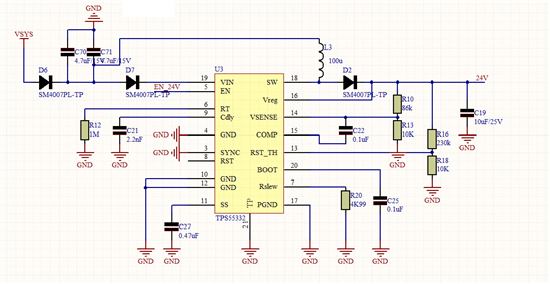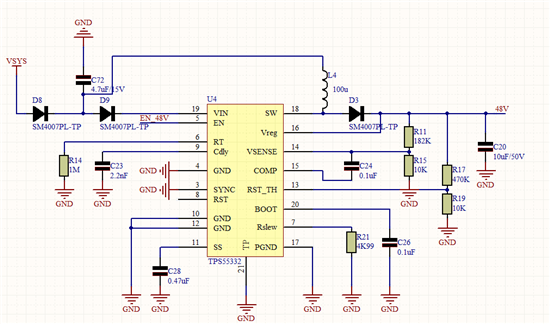Hi all,
I'm having many issues with the TPS55332, the datasheet is very cryptic and I'm unable to make this chip work properly.
Im unable to get 24 V (300ma) from 12 v and 48V (0.05ma) from 12 V, the ship overheats and burns (i've checked it thoroughly, no shorts, no bad connections). The 24 v schematic works unloaded at low frequencies (100kHz), loaded does not work at all, at higher frequencies (400KHz) burns out. The 48 v does not work at all.
Below the schematics.
Any help will be really appreciated.
Thanks and regards,
Xavi



